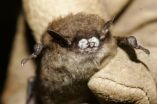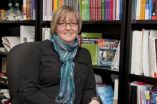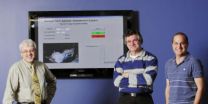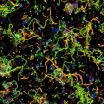(Press-News.org) The objective of this research is to understand how cooperation works in nature in general, and among humans in particular. "From the evolutionary point of view it is very difficult to understand why we would help others when what interests us is helping ourselves," explained the authors of this study, which was recently published in the journal PLoS ONE. One of the most striking conclusions drawn is that there are different types of people: those who always try to help their neighbors (around 5 percent), those who never do so (35 percent), and others who cooperate depending on their mood or according to how their neighbor has behaved previously (60 percent).
"We have proved that in general decisions regarding cooperation do not reflect so much economic incentives as much as they do the fact that the individuals with whom they interact cooperate or not," summed up Professor José A. Cuesta, who carried out this research along with the Full Professor Ángel Sánchez, both from the Mathematics Department at UC3M, together with a team of researchers from the UNED (National University of Distance Learning in Spain) and the Universidad Católica del Norte (Antofagasta, Chile). The results of the study, with implications for physics, economics, psychology, and mathematics and computing, could have practical applications. For example, they can be used to optimize collaboration and innovation networks, where large groups of people or companies participate in a common task, investing their economic capacities or generating knowledge. "In these cases," Sanchez pointed out, "we must foment a generally cooperative atmosphere for the participants, which then has implications for the size of work groups and the need for timely incentives in order to avoid falling into a non-cooperative mind set".
The experiment
The question at hand was determining if, in a dilemma where someone would have to choose between cooperating or not with other persons who were connected through a network, a situation could be achieved in which all or most of the people collaborated. The theories and the computer simulations did not offer a univocal response and in many cases made contradictory predictions; because of this these scientists decided to carry out an experiment with real individuals in such a situation. For this purpose, the researchers asked for volunteers among the student body at the UC3M Leganés campus and had them then interact through a computer programs so that they could see the persons with whom they had to cooperate or not, but keeping their anonymity at all times.
In the instructions given to 169 participants in this experiment, one of the largest carried out to date in experimental economics, words such as cooperate, betray, or let down were not employed in order to avoid inducing certain behavior, but instead choices were indicated by colors. During each round, a player obtained a certain benefit for his/her choice according to what his/her neighbors had chosen and he/she was informed what the others had done or won. The interaction was repeated a certain number of rounds and in two different situations; one in which the neighbors were always the same and another in which they changed after each round. "In this way," the researchers pointed out, "we were able to compare the result when there was an established contact network with what happens when there is not and the individuals interact with different groups."
INFORMATION:
Total cooperation among people is not viable
2011-02-15
ELSE PRESS RELEASES FROM THIS DATE:
Hand movements in children with ADHD hold clues to understanding and predicting symptom severity
2011-02-15
(Baltimore, MD) – Two research studies published today in Neurology®, the medical journal of the American Academy of Neurology, found markers for measuring the ability of children with Attention Deficit Hyperactivity Disorder (ADHD) to control impulsive movements, which may reveal insights into the neurobiology of ADHD, inform prognosis and guide treatments.
In one of two studies conducted by researchers at the Kennedy Krieger Institute in Baltimore, MD and the Cincinnati Children's Hospital Medical Center, children with ADHD performed a finger-tapping task. Any unintentional ...
More deep-sea vents discovered
2011-02-15
Scientists aboard the Royal Research Ship James Cook have discovered a new set of deep-sea volcanic vents in the chilly waters of the Southern Ocean. The discovery is the fourth made by the research team in three years, which suggests that deep-sea vents may be more common in our oceans than previously thought.
Using an underwater camera system, the researchers saw slender mineral spires three metres tall, with shimmering hot water gushing from their peaks, and gossamer-like white mats of bacteria coating their sides. The vents are at a depth of 520 metres in a newly-discovered ...
Culling can't control deadly bat disease
2011-02-15
Culling will not stop the spread of a deadly fungus that is threatening to wipe out hibernating bats in North America, according to a new mathematical model.
White-nose syndrome, which is estimated to have killed over a million bats in a three year period, is probably caused by a newly discovered cold-adapted fungus, Geomyces destructans. The new model examines how WNS is passed from bat to bat and concludes that culling would not work because of the complexity of bat life history and because the fungal pathogen occurs in the caves and mines where the bats live.
"Because ...
NIH study finds 2 pesticides associated with Parkinson's disease
2011-02-15
New research shows a link between use of two pesticides, rotenone and paraquat, and Parkinson's disease. People who used either pesticide developed Parkinson's disease approximately 2.5 times more often than non-users.
The study was a collaborative effort conducted by researchers at the National Institute of Environmental Health Sciences (NIEHS), which is part of the National Institutes of Health, and the Parkinson's Institute and Clinical Center in Sunnyvale, Calif.
"Rotenone directly inhibits the function of the mitochondria, the structure responsible for making ...
Playtime helps bind generations
2011-02-15
This release is available in French.
Montreal, February 14, 2010 – A new study has confirmed an old adage: A family that plays together stays together. Researchers from Concordia University and Wilfrid Laurier University examined the ways grandparents can maintain close ties with their adult grandchildren. True to the old maxim, recreation emerged as the glue sealing intergenerational bonds.
"Leisure is vital in the formation of bonds that last from generation to generation," says lead author Shannon Hebblethwaite, a professor in Concordia University's Department ...
Stem cell transplants help kidney damage
2011-02-15
Tampa, Fla. (Feb. 14, 2011) – Transplanting autologous renal progenitor cells (RPCs), (kidney stem cells derived from self-donors), into rat models with kidney damage from pyelonephritis - a type of urinary infection that has reached the kidney - has been found to improve kidney structure and function.
The study, authored by a research team from the Tehran University of Medical Sciences, is published in the current issue of Cell Medicine [1(3)] and is freely available on-line at: http://www.ingentaconnect.com/content/cog/cm .
"Advancements in stem cell therapies and ...
Researchers working toward automating sedation in intensive care units
2011-02-15
Researchers at the Georgia Institute of Technology and the Northeast Georgia Medical Center are one step closer to their goal of automating the management of sedation in hospital intensive care units (ICUs). They have developed control algorithms that use clinical data to accurately determine a patient's level of sedation and can notify medical staff if there is a change in the level.
"ICU nurses have one of the most task-laden jobs in medicine and typically take care of multiple patients at the same time, so if we can use control system technology to automate the task ...
Quest for designer bacteria uncovers a 'Spy'
2011-02-15
ANN ARBOR, Mich.---Scientists have discovered a molecular assistant called Spy that helps bacteria excel at producing proteins for medical and industrial purposes.
Bacteria are widely used to manufacture proteins used in medicine and industry, but the bugs often bungle the job. Many proteins fall apart and get cut up inside the bacteria before they can be harvested. Others collapse into useless tangles instead of folding properly, as they must in order to function normally.
A research team led by James Bardwell, who is a professor of molecular, cellular and developmental ...
New scholarly paper reveals 100 new species of lichenized fungi
2011-02-15
CHICAGO, IL – In an unprecedented coming-out party, 100 newly discovered species are revealed to the world in a single scholarly paper coordinated by Field Museum scientists.
The 100 organisms are lichens, a type of fungi that form associations with algae and populate environments from arctic tundra to tropical rain forests. And the usual inattention bestowed upon new lichens is one reason for aggregating so many new ones in a single paper in the Feb. 18 issue of the journal Phytotaxa.
It is estimated that about 100,000 fungal species, including 17,500 lichens, have been ...
Choosing your neighbors: MBL scientists see how microbes relate in space
2011-02-15
MBL, WOODS HOLE, MA—Like people in cities, microbes often live in complex communities that contain many different microbial types. Also like us, microbes tend to gravitate to and "hang out" with certain other types in their community, more than with the rest. And sometimes, when opportunities arise, they move to more favorable locations.
But until recently, scientists have not been able to look at a microbial community and distinguish the spatial relationship of more than 2 or 3 kinds of microbes at once.
Now, a microscopy technique developed at the Marine Biological ...






